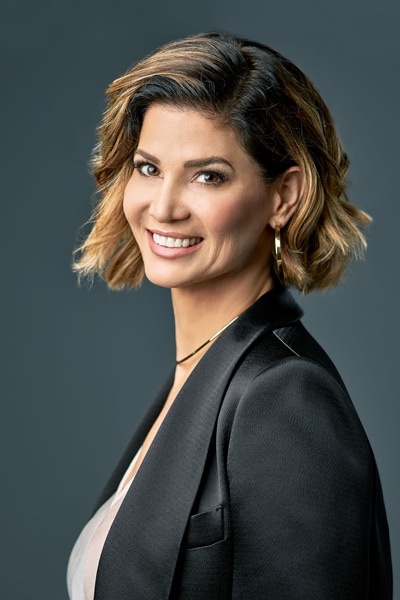“Companies need to be very smart about understanding themselves,” says Jenny Dearborn of SAP. “They need to ask, ‘What do our employees need to know? What do they currently know? What is the gap between those two things? What is the right way to close those gaps?’”
“Companies can’t let the world evolve and change without them,” she adds. “They’ve got to be strategic about their employee learning and development.”

It’s an understatement to say she speaks from experience. Years before Dearborn took her first job as chief learning officer (CLO)—a role she’s held at five companies, and at SAP since 2014—she found herself teaching high school English. She also found she wasn’t very good at it. “It fit neither my personality nor my needs,” Dearborn says she realized early on. “And because I have ADHD, I have a hard time sitting still—I need to work in a very fast-paced environment of constant change—so the idea of teaching Romeo and Juliet over and over for the rest of my career—much as I love Romeo and Juliet—it just wasn’t for me.”
So she stepped back, looked at the bigger picture of what she hoped to accomplish in her career—which was to create social change through education—and reset her sights on the corporate side of the education world. “I really grew to love the education business,” she says. “It was a very natural fit with my communication skills and deep empathy for the human learning experience.”
Getting a toehold in corporate education proved a bit more challenging. Since she was already situated in Silicon Valley, she aimed to work at IT giant Hewlett Packard—so she arranged informational interviews with different HP staff members. A grand total of forty-six informational interviews, to be exact, all completed while she was still teaching high school. But by the end of the 1994-95 school year, her tenacity paid off when she was hired full-time by HP as a classroom instructor in the employee Learning and Development department.
The “learning and development” part of Dearborn’s job remained, more than twenty years later, when she was installed as the first-ever CLO for enterprise-software giant SAP. As she learned new skills in making the role her own, years of human resource-rooted experience helped Dearborn and her team create individualized development opportunities for all 95,000-plus SAP employees as well. They lean heavily on an inside-out comprehension of the different roles within the company—both what’s expected of them currently and where they are headed. “Every company needs to understand the knowledge, skills, and abilities of their current employees, what they need from their future workforce, and how learning and development can close the gap so today’s humans can become the humans a company needs in the future,” she says. “This is a company’s strategic workforce plan.”
Unsurprisingly, technology has an ever-increasing hand in this process. Surveys and other traditional assessment tools, for example, are giving way to artificial intelligence (AI), which allows Dearborn to use real-time analysis of an employee’s performance to support highly personalized development plans. “AI is about very prescriptive, precise, dynamically changing, learning gap recommendations according to the demonstrated skill gaps and strengths of every employee,” she says. “Learning should be about prescribing what you need, not what those around you with similar job titles might need.”
Sean Farrington, senior vice president of EMEIA for enterprise technology skills platform Pluralsight Inc., a SAP partner, shares Dearborn’s belief that you need to develop tech talent from within. “These days your technology strategy is your company strategy, and if you aren’t committing to upskilling your teams with the latest technology skills, you will be left behind,” Farrington says. “Jenny is an incredible leader and true visionary who knows that for any organization to succeed there needs to be a commitment to empowering team members to keep pace with the rapid pace of technological change by learning new skills that support innovation.”
To be certain, those whose strengths include a command of technology stand a better chance of job market success. Department of Labor statistics quoted by Dearborn show that of seven million jobs currently open in the US, 500,000 of them require a computer science degree—yet only 45,000 computer science graduates join the workforce annually.
“Given this imbalance, corporations need to know how to grow their own technical talent from within and source from non-traditional education paths. There are so few new graduates from technical majors, companies will not be able to afford them if they find them, or they just won’t find them at all,” Dearborn says matter-of-factly. “We talk about a war for talent, but it’s really only a certain type of talent. As a country, our problem isn’t a lack of jobs, it’s not enough workers with the right skills to fill all the open jobs. It’s time for companies to grow that talent from within their existing workforce.”
Wherever the tech expertise comes from, the value goes even higher for those able to combine those skills with what she calls “fundamental human skills”—qualities that technology can’t duplicate. Critical thinking, problem-solving, empathy, creativity, innovation, emotional intelligence, and collaboration—what the World Economic Forum calls twenty-first century skills—fall into this category.

“We need to be able to identify the ethical implications of technology in our society,” Dearborn cautions. “What won’t be outsourced? What won’t go to AI? It’s not always about knowing what the right answer is, it’s about knowing the right question. We need to make sure we do not lose sight of those fundamental people skills.”
Those skills are critical to CLOs and their teams as well, and Dearborn cites, as proof, a corporate strategy goal from early in her tenure at SAP. The goal was to increase the number of women in people management jobs from 18 percent of SAP’s workforce to 25 percent. The action taken by the HR team prior to Dearborn’s arrival was a one-day training class called Men and Women Leading Together—“Kind of like the book Women are from Venus, Men are from Mars in action for a day,” she explains. It was fun, it was informative, and it full of cocktail-party ready factoids about how men and women’s brains operated differently. But Dearborn didn’t see the class translating into more women in management.
So they did an analysis of women with management potential, and found a critical commonality: they didn’t feel ready or supported for upper management roles. Then, in studying the actual job descriptions provided by SAP, they identified a clear reason why women considering these positions might feel unsupported: the descriptions in question used only masculine pronouns (“he” and “him”).
Dearborn’s team cancelled the training class, rewrote the job descriptions, and trained recruiting staff to make sure there was at least one woman in every final group of candidates for open management positions, and prepared those candidates for their interviews. They also identified top-performing women and matched them with sponsors who encouraged them to apply for promotions. When there weren’t enough qualified women in line for management roles, Dearborn’s team created development programs, like the award-winning programs, LEAP and SPARK, for aspiring leaders. And if there were qualified women who then lost the job to a man, the team sought to find out why.
“If we were told ‘all the women I interviewed didn’t have enough financial acumen skills,’ I said ‘Well, let’s go find all the high potential women ready to hire, give them financial acumen training, and then coach them for the interview process,’” Dearborn reports. “Three years later, that goal of 25 percent women in people leadership roles, had been met.”
While her team takes pride in such achievements, Dearborn admits one of the biggest challenges a CLO faces today is a basic one: finding the most efficient use of ever-shrinking training time. “What continues to accelerate is the amount of knowledge, the volume of information people need to learn, the increased level of distractions in society, and less and less time dedicated to learning in the corporate environment,” she says.
But rather than fight this trend, Dearborn’s team thinks it out strategically— what skills need to be practiced in person with others, what can be learned online at an employee’s leisure, and so on. Dearborn credits SAP’s culture, fueled by an entrepreneurial spirit and sense of empowerment, for much of her team’s ongoing success with issues like this.
“It’s a very involved employee base here, with a lot of initiative at the local level,” she says. “And that’s a huge part of why my team has had such an impact. I don’t feel like I have to convince anyone that what we do is important.”
Strategic partnerships lead to learning and HR technology success. Jenny believes in utilizing technology to drive performance in human resources and learning.
“Our partnership enhances the services and technology to meet the unique global learning goals of the company.” —Michael Reedy, OutCons Managing Partner















